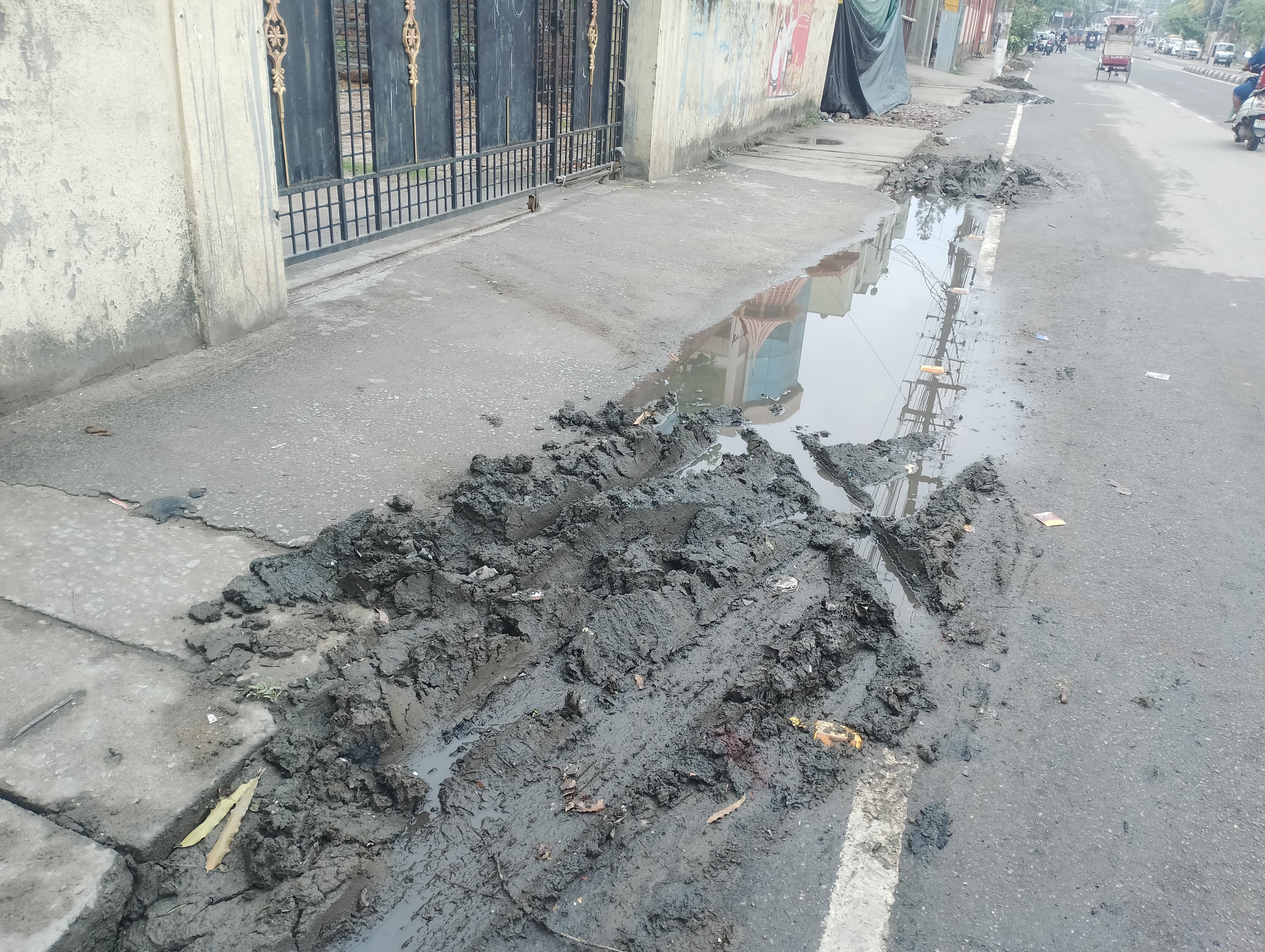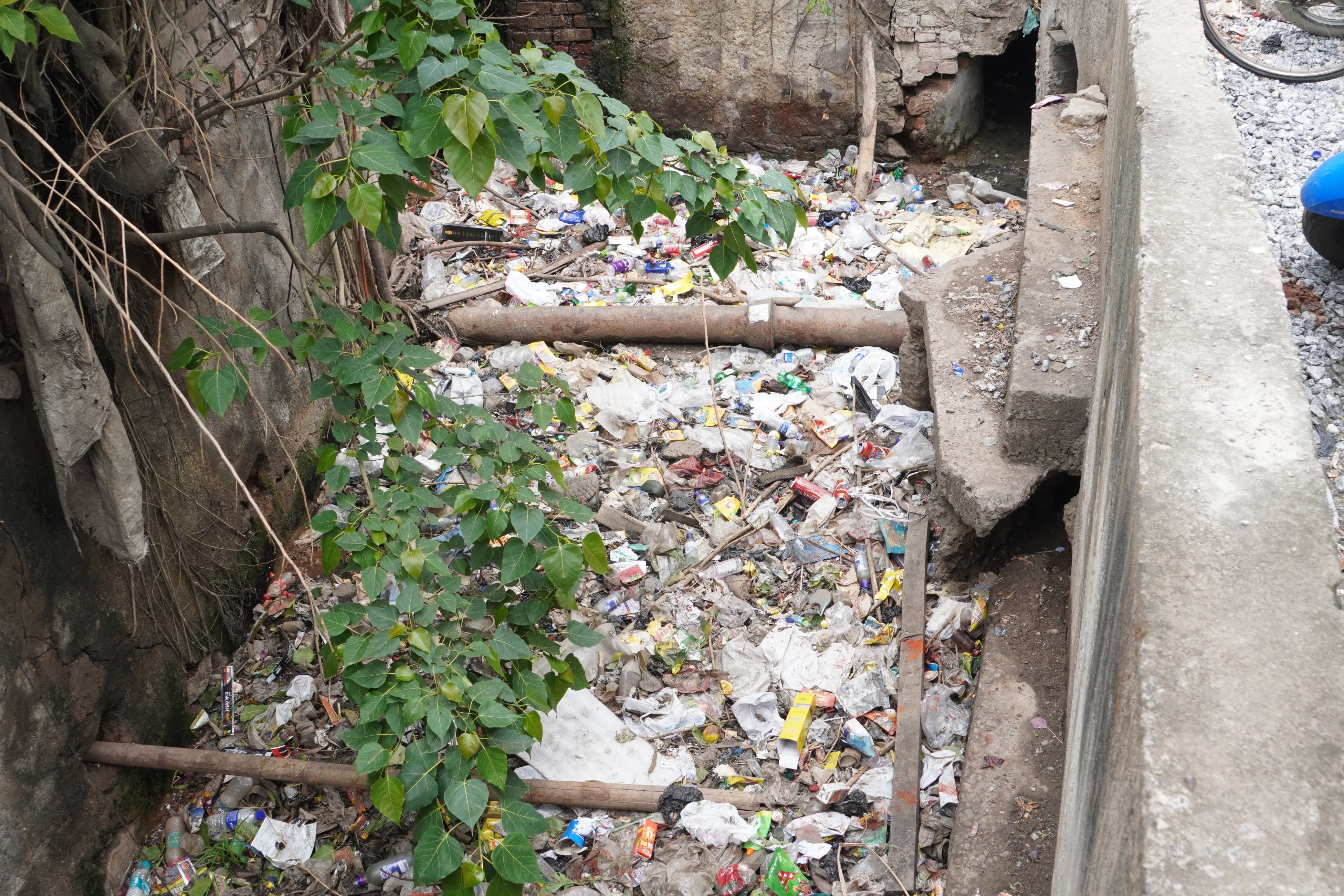Unless systemic changes are made and responsibilities centralised, Guwahati’s dream of becoming flood-free will remain stuck in the silt its drains throw up
As the first spell of pre-monsoon showers lashed Guwahati, the city once again found itself in a familiar and distressing position—struggling with waterlogging, blocked culverts, messy neighbourhoods, and the looming threat of yet another monsoon nightmare. Despite tall claims by the Guwahati Municipal Corporation (GMC) and the Public Works Department (PWD) about executing a “Mission Flood-Free Guwahati,” the on-ground reality suggests that the plan has already run aground.
ALSO READ: Earth Cutting, Encroachment In Guwahati Hills Threaten Wildlife And Human Safety
At the heart of the problem lies the utter disregard for the Standard Operating Procedures (SOPs) issued in February this year for the desiltation of drains across the city. These SOPs, which mandated key practices such as same-day clearance of silt, photographic documentation in the presence of officials, and the use of leak-proof vehicles for transportation, have been left largely on paper.
“There is no new strategy. We are still doing everything manually. Even with desiltation, there is no major impact. Culverts are clogged, and it’s very difficult to clear them,” a source from GMC said.
While super sucker machines are occasionally deployed to clean drains along arterial roads, the bulk of the desiltation work, especially in interior residential lanes, continues to rely heavily on manual labour. With no mechanical tools or consistent mechanised process in place, the workers are forced to enter drain pits with basic equipment like spades and buckets—an archaic and hazardous method that not only slows down the pace but also renders the work ineffective.

The result: silt removed from drains is often left lying on the roadside for hours, sometimes even days, turning into breeding grounds for disease-carrying mosquitoes and rodents. In many parts of the city, stagnant water and sludge have created unsanitary conditions, angering residents and raising concerns about public health just as the monsoon season begins.
“Every year it’s the same story. They dig up the drains and leave the muck all around. We can’t even walk out of our houses properly, and the smell is unbearable,” said a resident of Wireless.
According to the SOP issued by the administration in February 2025, all drain water must be pumped out before desiltation begins. Dry bed measurements are to be taken in the presence of GMC officials, along with geo-tagged photographs for accountability. Crucially, the SOP states that desilted material must be cleared within two hours and transported in leak-proof, tarpaulin-covered vehicles to avoid spillage.
Yet, across Guwahati, these protocols appear to be the exception rather than the rule. Silt is often dumped in open spaces and cleared days later, that too without any protective covering. While 21 Urban Technical Officers were assigned to monitor and ensure compliance, their role appears to have been reduced to that of mere spectators.

A field inspection in areas like Chandmari, Hatigaon, and Rajgarh showed gross violations of every clause in the SOP. Piles of black sludge line the footpaths, with no sign of geo-tagging or official oversight. “There’s no monitoring, no accountability. The rules are just for show,” said another frustrated local.
The drainage network in Guwahati is a fragmented affair managed by three different government agencies—GMC, PWD, and the Guwahati Metropolitan Development Authority (GMDA). While GMC is responsible for cleaning approximately 400 drainage systems, the PWD handles around 260 drains, mostly along the main roads. GMDA, meanwhile, is tasked with overseeing the overall maintenance of the drainage infrastructure.
This division of responsibility has created more confusion than clarity. In many cases, no single agency is willing to take ownership of a clogged or damaged drain. Officials pass the buck to each other, citing jurisdictional boundaries, tender delays, or manpower shortages.
“We are only responsible for the main roads. Almost all our desiltation work is complete,” said a PWD official to GPlus. But this claim sharply contrasts with the scenes in places like GS Road and Zoo Road Tiniali, where drain covers remain broken and water overflows onto the streets.
In the absence of a centralised, coordinated approach, citizens are bearing the brunt of this administrative mess. Localities such as Anil nagar, Hatigaon, and Wireless have reported frequent waterlogging even after brief spells of rain. Schoolchildren are forced to wade through knee-deep water, elderly residents find themselves trapped indoors, and shopkeepers struggle to keep their businesses open.

“We see workers clearing the drains in the morning, but the silt is left on the road. Then it rains, and everything flows back into the drain. What’s the point of this exercise?” asked a shopkeeper at Ulubari.
One of the lesser-discussed aspects of the SOP was its clause mandating that the same procedures be followed during the contract period for periodic maintenance. But with most contracts awarded to third-party vendors based on lowest bids rather than performance history, quality control has been minimal. Workers hired on daily wages often lack training, safety equipment, or even basic protective gear.
In many places, open drains are cleaned without any warning signs or barricades, putting pedestrians at risk. Instances of workers getting injured due to lack of proper gear are not uncommon, yet safety protocols are rarely enforced.
Ironically, Guwahati is often touted as an aspiring smart city. But the city’s desiltation plan remains deeply unscientific. There is no comprehensive database of the existing drainage network, no proper mapping of chokepoints, and certainly no predictive modelling to anticipate water flow patterns. The few smart interventions—like deploying GPS-fitted vehicles for silt transport—remain limited to high-visibility areas, mostly for media optics.
“Drainage planning here is reactive, not proactive. We wait for the water to accumulate and then act. There’s no data, no digital inventory of drains. Even the super sucker machines are used selectively,” said an urban planner based in Guwahati.
Among the three agencies, GMDA’s role is the most opaque. Despite being the nodal authority for drainage infrastructure, its involvement during the critical pre-monsoon desiltation drive has been negligible. There has been no official statement from GMDA on their audit of past failures or their plan to prevent a repeat this year.
Citizens have time and again demanded a unified command or drainage task force to streamline responsibilities and ensure accountability. But so far, these calls have gone unheard.
As April gives way to the full force of monsoon rains, residents are bracing for more chaos. From GS Road to Ganeshguri, and from Six Mile to Fatasil Ambari, the fear of ankle-deep—or worse, waist-deep—floodwaters is once again gripping the people of Guwahati.
The failure to implement a clear, well-monitored, and scientifically designed desiltation strategy reflects deeper flaws in the city’s governance model. The SOP was a step in the right direction, but in the absence of political will, inter-agency cooperation, and robust enforcement, it has remained little more than a bureaucratic document.
Unless systemic changes are made and responsibilities are centralised, Guwahati’s dream of becoming flood-free will remain stuck in the silt.



